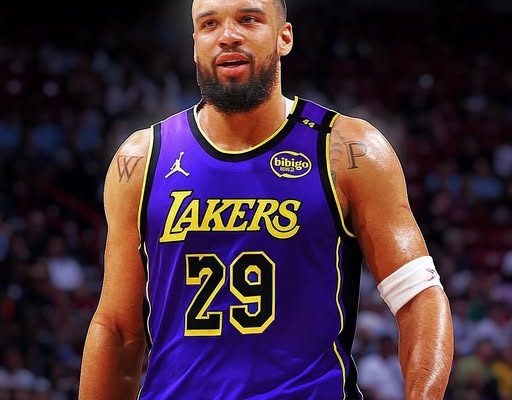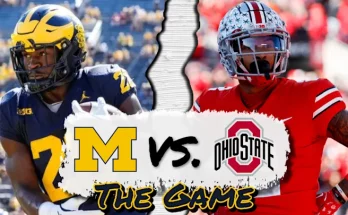In the ever-evolving landscape of the NBA, the pursuit of excellence has never been more complex or nuanced. Teams no longer rely solely on a singular superstar or a traditional lineup to dominate the court. Modern basketball demands a delicate balance of talent, defense, versatility, and adaptability, with organizations constantly searching for the perfect combination that will elevate them to championship status. Over the past decade, the league has seen a seismic shift in how teams are built, moving from a reliance on raw athleticism and individual scoring prowess to an emphasis on systems, analytics, and a multifaceted approach to winning. Teams like the Golden State Warriors, Milwaukee Bucks, Boston Celtics, and Miami Heat have exemplified this evolution, showing that success in today’s NBA comes from more than just assembling a collection of stars—it requires cohesion, strategic ingenuity, and a commitment to building around both skill and character.
One of the most notable transformations in the NBA has been the prioritization of versatility. Gone are the days when a team could succeed with rigid positional structures. Today, the concept of positionless basketball dominates, with players expected to handle multiple roles, guard various positions, and contribute in ways that go beyond scoring. LeBron James and Giannis Antetokounmpo have become icons not only for their individual brilliance but for their ability to adapt to different positions and facilitate team success in ways that were less common in previous eras. This shift toward versatility forces teams to seek players who are more than specialists; they must be capable defenders, playmakers, and scorers depending on the situation. The most successful franchises understand that building a roster around versatility creates matchup nightmares for opponents and offers strategic flexibility in both the regular season and the playoffs.
Defense, which has always been a foundational element of championship teams, has evolved alongside offensive versatility. While scoring continues to grab headlines, elite defense often separates contenders from pretenders. Defensive efficiency has become a key metric in evaluating player and team performance, with advanced analytics highlighting the value of rim protection, perimeter defense, and defensive rotations. Teams like the Milwaukee Bucks, with Giannis leading the charge, and the Boston Celtics, featuring Jayson Tatum and Jaylen Brown, exemplify the importance of a two-way approach. A team with multiple players capable of switching across positions, contesting shots, and protecting the rim without sacrificing offensive flow is in a prime position to contend. The integration of defensive schemes with offensive versatility ensures that teams are not one-dimensional, making it significantly harder for opponents to exploit weaknesses.
Equally crucial to building a championship-caliber roster is talent—both in terms of individual skill and complementary dynamics. Modern NBA teams invest heavily in scouting, analytics, and player development to ensure they maximize every asset on their roster. Star power remains important, but context is key. A dominant scorer or an elite playmaker can elevate a team, but only when surrounded by the right pieces. The Golden State Warriors’ dynasty offers a prime example. While Stephen Curry, Klay Thompson, and Draymond Green were the core talents, the team’s success hinged on how each player’s strengths complemented the others. Curry’s shooting forced defenses to extend, Thompson’s perimeter accuracy provided spacing, and Green’s defensive versatility anchored the team. Together, these elements created a synergy that transcended individual talent, proving that championships require more than isolated excellence—they demand orchestration.
The role of the front office in this ecosystem cannot be overstated. Successful teams are often those that combine a keen eye for talent with strategic acumen in roster construction. General managers and executives must weigh short-term goals against long-term sustainability, balancing veteran leadership with youthful energy and potential. Draft decisions, trades, and free-agent acquisitions are scrutinized not just for individual impact but for how they fit into the broader system. The Miami Heat, under Pat Riley’s leadership, have demonstrated how disciplined roster management can lead to sustained success. By targeting versatile players who thrive in a culture of accountability and team-first basketball, the Heat have consistently positioned themselves as contenders, even without the league’s most hyped superstars at every moment. This approach highlights that talent alone is insufficient; context, culture, and fit are critical.
Another facet of the modern NBA’s evolution is the integration of analytics into decision-making. Teams now utilize vast amounts of data to evaluate efficiency, predict outcomes, and identify undervalued players. Analytics inform not only player acquisition but also in-game strategies, such as shot selection, lineup adjustments, and pace management. The emphasis on three-point shooting and spacing, popularized by teams like the Warriors and adopted league-wide, stems largely from analytical insight into efficiency and scoring probability. Players who can stretch the floor, defend multiple positions, and make high-percentage decisions are now more valuable than ever. This analytical revolution has forced teams to think creatively about roster construction, blending traditional scouting with modern metrics to optimize performance.
In addition to analytics, the psychological and cultural dimensions of a team have become increasingly important. Championship teams often boast strong leadership, accountability, and a collective mindset that emphasizes trust and resilience. Players must buy into a system, accept their roles, and maintain focus during the highs and lows of an 82-game season plus playoffs. Teams like the Celtics and Warriors have cultivated cultures where young talent develops alongside veteran leadership, creating an environment where accountability drives performance. The intangible qualities of chemistry, resilience, and mental toughness are as vital as physical skill, particularly in the playoffs where the margin for error is slim and the pressure is immense.
Adaptability is another hallmark of successful modern NBA teams. Injuries, midseason trades, and strategic countermeasures from opponents necessitate a level of flexibility that goes beyond the court. Teams must be able to adjust rotations, schemes, and roles quickly without losing cohesion. This adaptability is why depth has become a prized commodity; teams need reliable contributors beyond their starters to sustain performance over the long haul. The ability to integrate new pieces seamlessly, whether from trades, free agency, or the draft, often distinguishes perennial contenders from teams that falter under pressure. Coaching staffs play a critical role here, devising schemes that maximize player strengths while remaining fluid enough to respond to in-game challenges. The emphasis on adaptable systems ensures that a team’s identity is not rigid but dynamic, capable of evolving with circumstances.
The financial landscape of the NBA also influences team construction. Salary cap management, luxury tax implications, and contract structures impact how teams acquire talent and maintain flexibility. Teams must balance paying stars competitively with preserving cap space to fill out a versatile and deep roster. This delicate balance between financial prudence and competitive ambition adds another layer of complexity to roster building. Successful organizations navigate these constraints skillfully, leveraging trades, free agency, and the draft to maintain both talent and flexibility. Franchises that mismanage these aspects often find themselves constrained, unable to adapt or pursue championship aspirations fully.
Beyond individual teams, league-wide trends shape how organizations approach the pursuit of a championship. The rise of superteams, the influence of global talent pipelines, and the evolution of playing styles all inform strategic decisions. Teams must anticipate these trends and position themselves to exploit emerging opportunities, whether through the draft, scouting international players, or identifying undervalued assets. The global nature of talent acquisition has expanded the pool of potential contributors, allowing teams to find unique combinations that give them a competitive edge. Similarly, the trend toward small-ball lineups, pace-and-space offense, and positionless defense reflects a continuous arms race in innovation, where staying ahead of strategic shifts can be the difference between contention and mediocrity.



